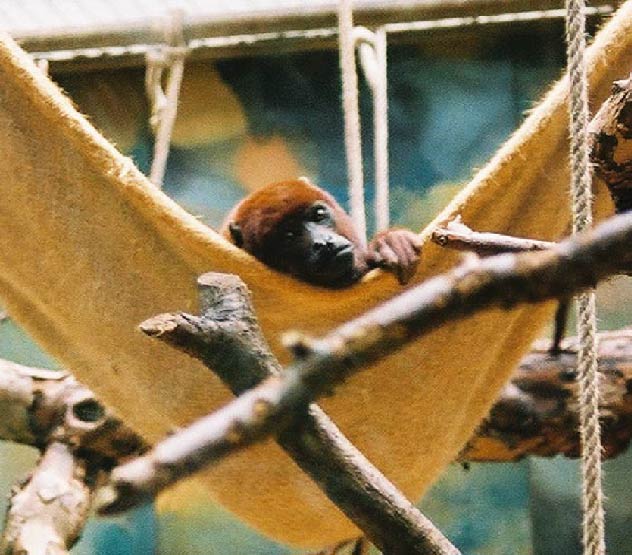The red howler monkey has a prehensile tail without hair on the bottom side, which is used for grasping during locomotion and feeding. The upper molars have sharp shearing crests, which are used in grinding leaves. The hyoid bone is modified for the production of the howling calls indicative of members of this genus; this bone is larger in males than in females. This species is sexually dimorphic in terms of size (Fleagle, 1988). The average body mass for males is between 6 and 8 kilograms, and for females it is between 4.5 to 5.5 kilograms.

